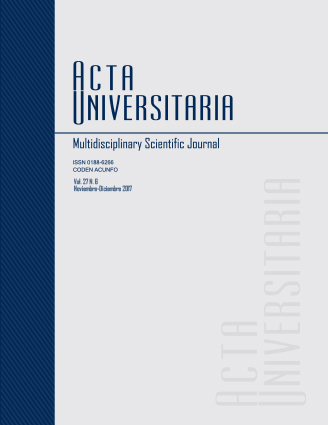Daño oxidativo en lípidos del sistea nervioso central y bazo de ratones con deficiencia de Hierro
Publicado 2018-02-26
Palabras clave
- Oxidative stress,
- lipid peroxidation,
- iron deficiency,
- central nervous system,
- spleen.
- Estrés oxidativo,
- peroxidación lipídica,
- deficiencia de hierro,
- sistema nervioso central,
- bazo.
Cómo citar
Resumen
El estrés oxidativo (EO) es factor de riesgo en trastornos neurodegenerativos. Las concentraciones de hierro se han relacionado al EO; sin embargo, el efecto de la deficiencia de hierro (DH) en la inducción de EO en el Sistema Nervioso Central (SNC) es desconocido. Se empleó un modelo murino consistente de 6 machos BALB/c de dos meses de edad para DH crónica inducida por dieta, para determinar su papel en la inducción de EO. La peroxidación lipídica se determinó midiendo especies reactivas al ácido tiobarbitúrico (TBARS) en el SNC de ratones de 2 meses de edad, usando el bazo para comparación. Se encontró una disminución en productos de peroxidación en el SNC DH, comparado con controles alimentados con dieta normal. El bazo mostró un aumento significativo de la peroxidación lipídica en el grupo DH. Los resultados sugieren que la DH crónica puede tener efectos diferenciales en el SNC y tejidos periféricos. Una cantidad reducida de especies reactivas de oxigeno en estado basal podría estar relacionada con alteraciones en el metabolismo y funcionamiento normal del SNC bajo condiciones de DH crónica.

